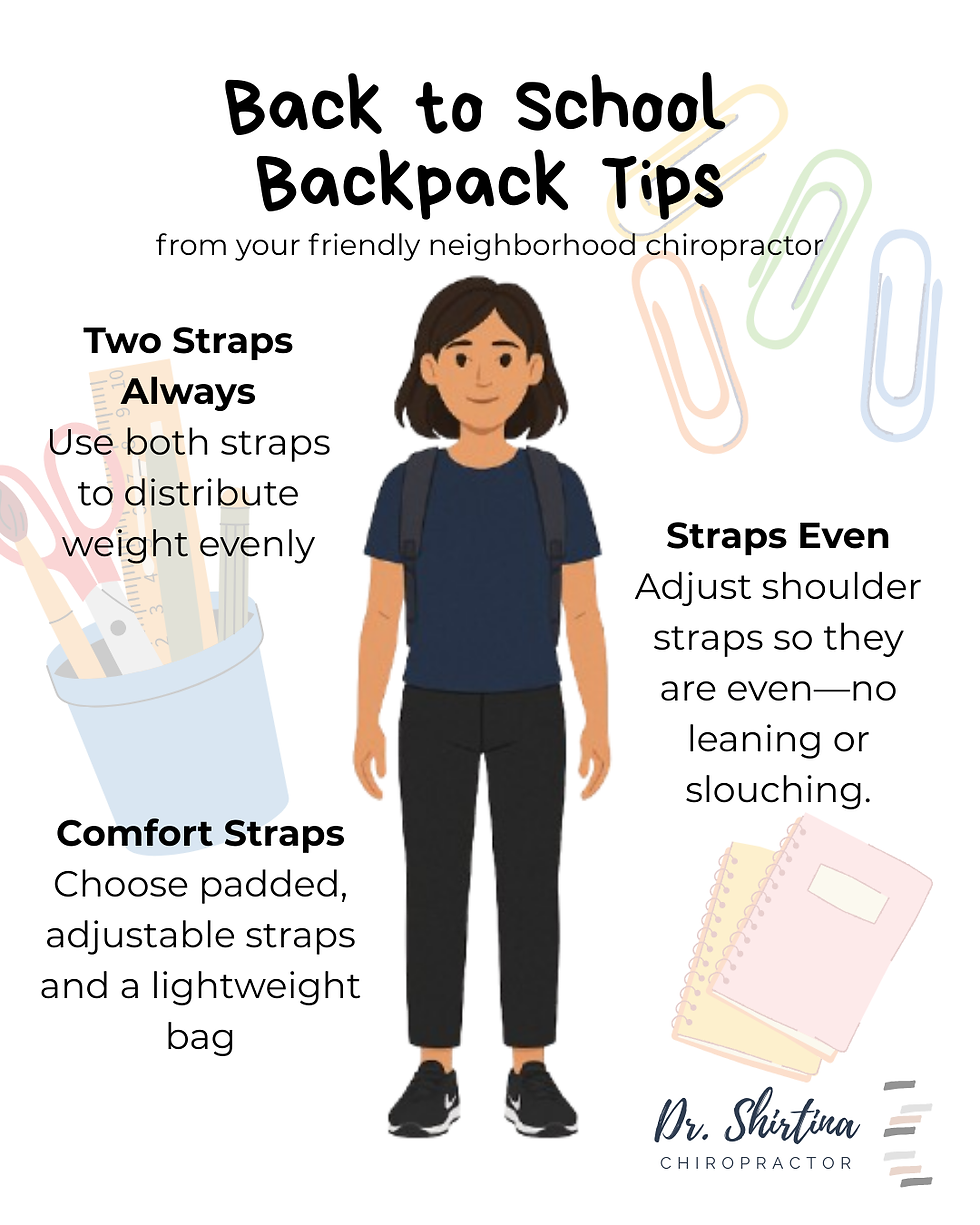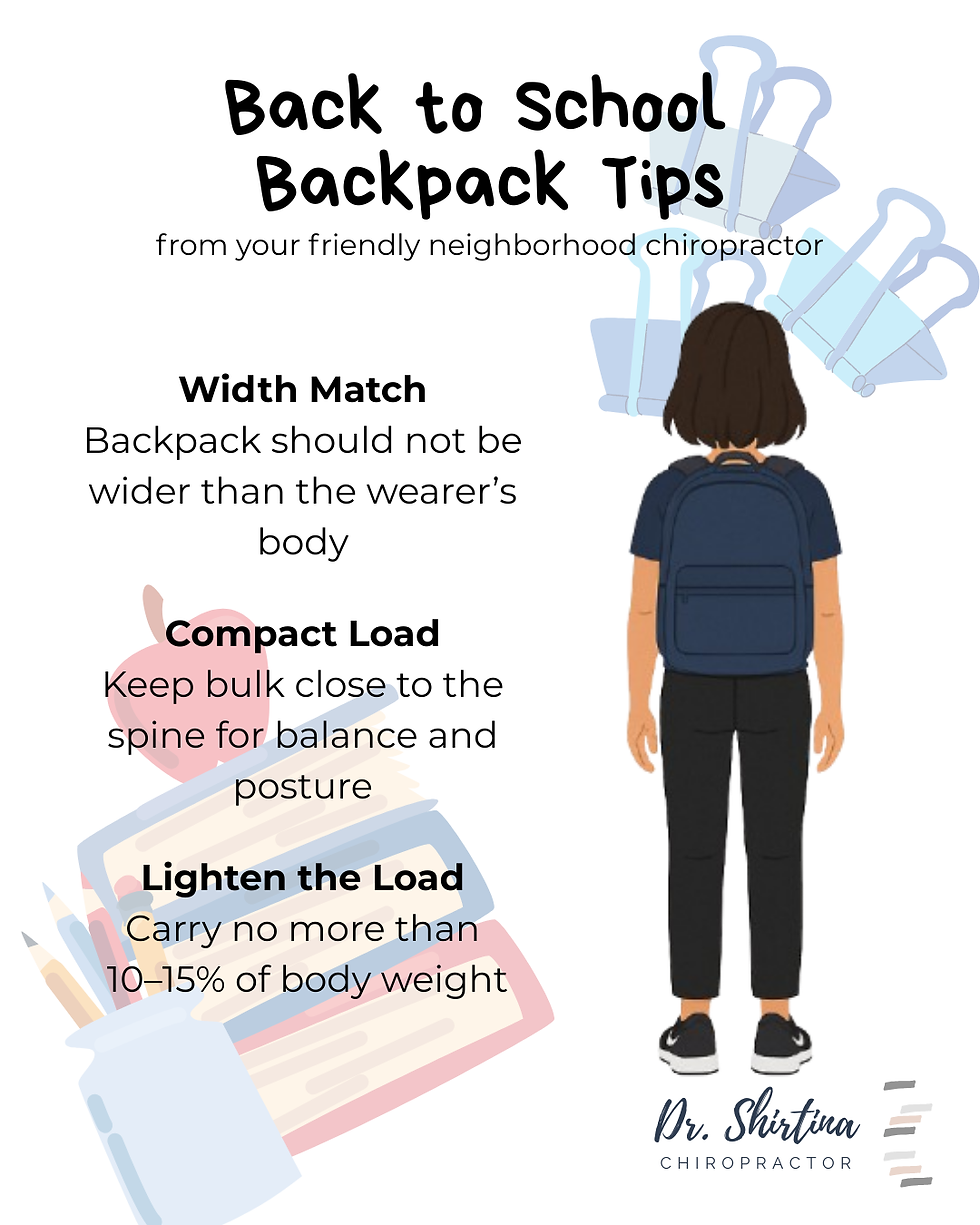Healthy Backpack Habits: Chiropractor-Approved Tips for Kids and Teens
- Shirtina Quon

- Aug 25
- 2 min read
As the school year kicks off, kids everywhere are packing up their backpacks with books, laptops, water bottles, and everything in between. While backpacks are an everyday essential, the way they’re worn can have a big impact on posture, comfort, and long-term spinal health.
As a chiropractor, I often see young patients with sore shoulders, headaches, or back discomfort—sometimes linked to something as simple as an ill-fitting or overloaded backpack. Let’s walk through what to look for and how to make sure your child is carrying their load safely.
Why Backpack Fit Matters
Children and teens are still growing, which means their spines and posture habits are especially sensitive to stress. An overloaded or poorly fitted backpack can lead to:
Muscle strain in the shoulders and neck
Rounded posture or “hunching forward”
Uneven weight distribution that encourages leaning or slouching
Increased fatigue, which can affect focus in class or on the field
The good news? Small adjustments make a big difference.
1. Front View: What to Look For
Straps Even → Shoulder straps should be the same length to avoid leaning to one side.
Close to the Body → The backpack should sit snugly against the back—not swinging away.
Two Straps Always → Wearing both straps distributes weight evenly, preventing muscle strain.

2. Side View: Keeping It Balanced
High & Centered → The bottom of the backpack should sit no lower than 2 inches above the waistline.
Back Shape Match → A well-fitted pack follows the curve of the spine, rather than pulling backward.
Snug Fit → Straps should be firm enough to keep the pack in place, but not so tight that they dig into the shoulders.

3. Back View: The Big Picture
Width Match → The backpack shouldn’t be wider than your child’s body. Oversized packs can throw off balance.
Compact Load → Pack heavier items (like textbooks or laptops) closest to the spine, with lighter items in front.
Lighten the Load → As a rule of thumb, backpacks should carry no more than 10–15% of your child’s body weight.

Practical Tips
Choose wisely: Look for backpacks with padded straps, a waist or chest strap, and multiple compartments for balance.
Pack smart: Place heavier items closest to the back, and remind kids not to bring unnecessary extras.
Check in often: Kids grow quickly—what fit well last year may need adjusting this year.
Do a “fit test”: Have your child put on their backpack and check posture from the front, side, and back. Are they standing tall and balanced? Perfect.
A backpack may seem small in the grand scheme of school prep, but how it fits can make a lasting impact on your child’s comfort and health. This back-to-school season, take 5 minutes to check their pack—it’s a simple step toward a healthier year.





Comments